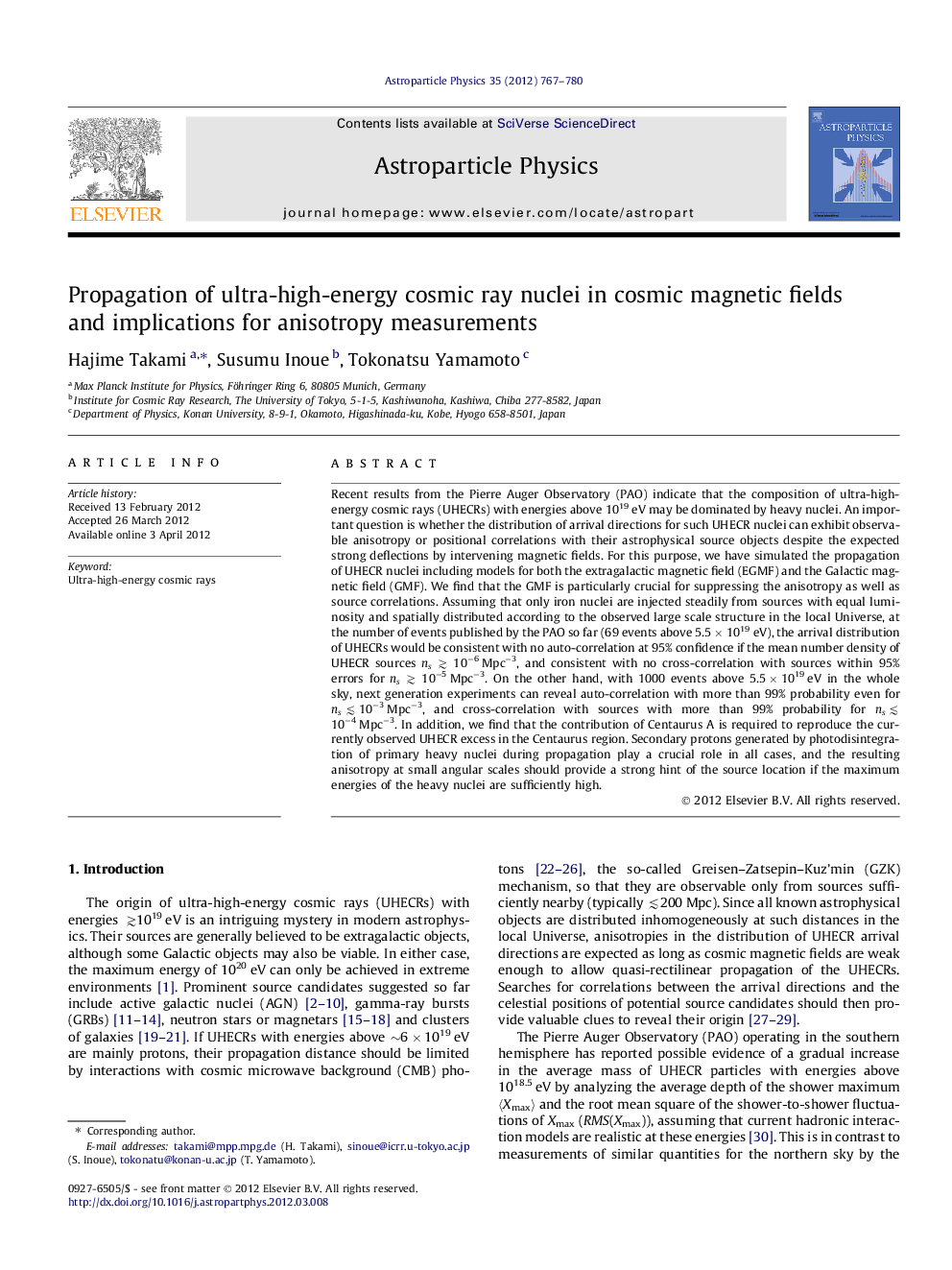| Article ID | Journal | Published Year | Pages | File Type |
|---|---|---|---|---|
| 1770884 | Astroparticle Physics | 2012 | 14 Pages |
Recent results from the Pierre Auger Observatory (PAO) indicate that the composition of ultra-high-energy cosmic rays (UHECRs) with energies above 1019 eV may be dominated by heavy nuclei. An important question is whether the distribution of arrival directions for such UHECR nuclei can exhibit observable anisotropy or positional correlations with their astrophysical source objects despite the expected strong deflections by intervening magnetic fields. For this purpose, we have simulated the propagation of UHECR nuclei including models for both the extragalactic magnetic field (EGMF) and the Galactic magnetic field (GMF). We find that the GMF is particularly crucial for suppressing the anisotropy as well as source correlations. Assuming that only iron nuclei are injected steadily from sources with equal luminosity and spatially distributed according to the observed large scale structure in the local Universe, at the number of events published by the PAO so far (69 events above 5.5 × 1019 eV), the arrival distribution of UHECRs would be consistent with no auto-correlation at 95% confidence if the mean number density of UHECR sources ns ≳ 10−6 Mpc−3, and consistent with no cross-correlation with sources within 95% errors for ns ≳ 10−5 Mpc−3. On the other hand, with 1000 events above 5.5 × 1019 eV in the whole sky, next generation experiments can reveal auto-correlation with more than 99% probability even for ns ≲ 10−3 Mpc−3, and cross-correlation with sources with more than 99% probability for ns ≲ 10−4 Mpc−3. In addition, we find that the contribution of Centaurus A is required to reproduce the currently observed UHECR excess in the Centaurus region. Secondary protons generated by photodisintegration of primary heavy nuclei during propagation play a crucial role in all cases, and the resulting anisotropy at small angular scales should provide a strong hint of the source location if the maximum energies of the heavy nuclei are sufficiently high.
► The arrival distribution of UHE nuclei is examined with cosmic magnetic fields. ► Possible effects of a nearby UHECR source to observables are investigated. ► Future prospects on anisotropy measurements are discussed in a heavy ion scenario.
